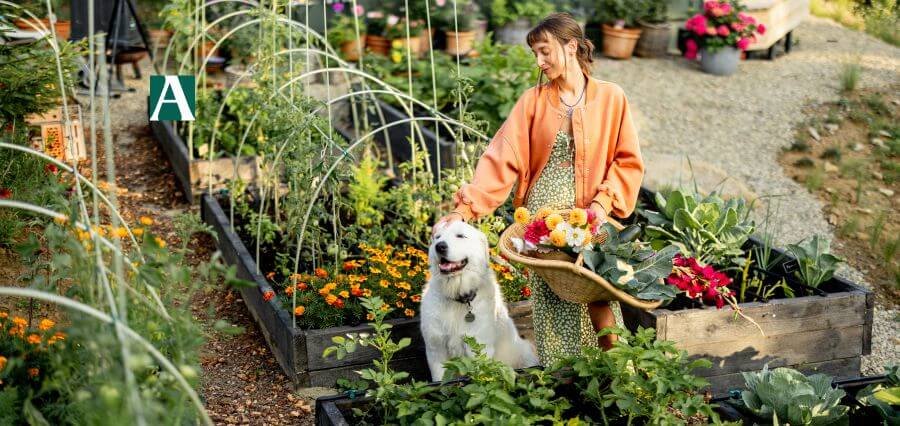In the face of growing environmental concerns, creating an eco-friendly lifestyle is more than a trend—it’s a necessity. As pet ownership becomes increasingly common, it’s important for responsible pet parents to extend sustainable practices to the care of their animals. Pets can bequeath a lasting environmental legacy in terms of food consumption, waste production, and accessory usage. Fortunately, through dedication and careful choices, it’s completely possible to build an eco-friendly pet area that benefits the world and your pet’s well-being as well. Transitioning to a greener pet lifestyle not only minimizes the carbon footprint but also contributes to a healthier, more fulfilling life for your pet.
Choosing Sustainable Pet Products
One of the easiest things to do to start building a green pet space is to select products that are made with sustainability in mind. Most traditional pet products—whether toys, bedding, or collars—are plastic or man-made products that nature has difficulty degrading. Opting for products made from natural, recycled, or organic materials is a good starting point. Bamboo, hemp, or recycled cotton toys and accessories are not only longer lasting but also healthier for pets since they contain fewer poisonous chemicals and dyes.
Aside from toys and accessories, use environmentally friendly solutions as well when it comes to grooming and cleaning products. Biodegradable pet cleaners and shampoos are typically packaged in recyclable materials and free of leaching chemicals into waterways. Their buy helps reduce your environmental footprint while protecting your pet safely chemically from toxins that are sure to have a negative effect on their overall health. Your buy also encourages ecologically conscious businesses that support ethical sourcing, animal testing that is free from cruelty, and environmentally friendly production.
Protecting the Environment through Healthy Pets
Pet food production is among the key drivers of environmental degradation from farming resource use, packaging, and transportation. More sustainable action begins with the selection of pet food that is produced on the basis of responsibly sourced inputs. Organizations utilizing the utilization of organic or regional materials have lower environmental footprint, and many utilize the utilization of plant protein or insect protein as a means of reducing the carbon footprint typically associated with conventional meat production.
Reducing packaging waste is another important consideration. Buying in bulk or packaging pet food in recyclable or compostable materials cuts down on plastic waste immensely. Another choice is making your own pet treats or food when possible, utilizing fresh, locally sourced ingredients. While it is advisable to seek the opinion of a veterinarian or pet nutritionist for a guarantee that your pet’s nutritional requirements are fulfilled, this tradition means more control over ingredients and waste from packaging, thus promoting a greener life.
Proper Pet Waste Management
Pet waste is a chief cause of environmental pollution, especially in urban areas. Dog and cat feces contain disease-causing pathogens that will taint water and soil if not disposed of in a sanitary manner. Plastic poop bags and clay cat litter contribute to the weight of landfills and environmental pollution. To reduce its impact, use biodegradable or compostable garbage bags made from organic plant material and not petroleum-based plastic. These processes degrade quicker and have a reduced ecological impact.
For cat owners, the shift to an eco-litter composed of recycled paper, corn, or wood shavings is a significant step. They are all biodegradable, less environmentally degrading to manufacture, and overall healthier for your cat’s paws. Composting pet waste, while not practical for all types of waste or weather conditions, is another way of decreasing the landfill burden. Composting, however, needs to be done with caution and best avoided for the meat refuse of carnivores unless there are special systems.
Reduction in Energy Use and Water Consumption
Energy and water use are often ignored aspects of pet maintenance. From operating aquarium pumps to constant pet bedding washing, pets can indirectly influence home utility use. To minimize the impact, utilize energy-efficient substitutes like aquarium timers or solar-powered heaters when suitable. For pet housing, provide adequate insulation and ventilation systems to minimize heating or cooling needs, especially for outside animals.
Water conservation should also be attempted wherever possible. Wash your pet in a basin, not a running faucet or hose, and use water-saving grooming practices. Daily maintenance and spot-cleaning of your pet’s bed could reduce full washes and conserve water. Small changes in behavior, if practiced consistently, can have a tremendous impact on the environment without having a detrimental effect on the comfort and cleanliness of your pet.
Conclusion
A creation of an eco-friendly pet space is a multi-faceted task of attitude and habit change. From responsible purchasing decisions to clean energy waste management and energy efficiency, each action helps to preserve the environment. As pet owners, they have the unique benefit of being able to make a positive contribution to the environment without compromising on animal welfare or happiness. By embracing sustainable practices, you’re not only advocating for the health of your pet but also contributing to a broader culture of environmental responsibility.




